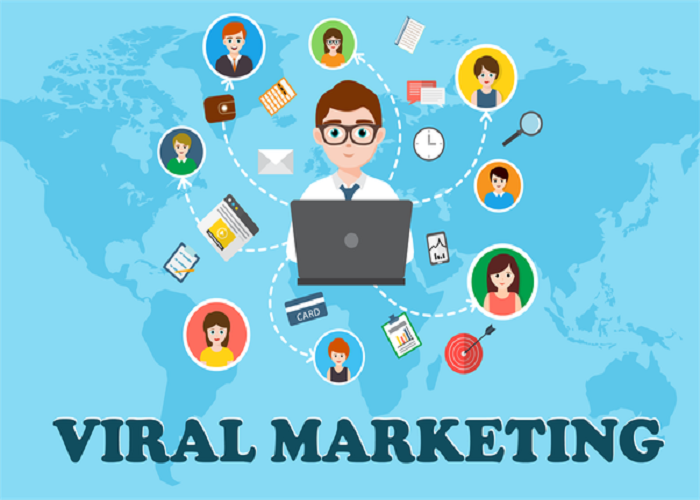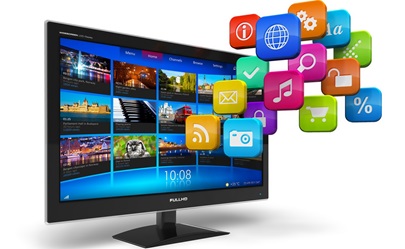Types of Digital Marketing
In our many years of work with the internet-y, we have seen
that digital marketing grows from 20 years ago till now. You had invested in
digital marketing 20 years back then you were a fool but if you are not
investing in digital marketing now then you are a fool. Most of the businesses
are increase their budget through digital marketing. Because almost everyone
shows their interest in digital marketing as compared to print marketing.
Because digital marketing attracts people easily. Digital marketing campaigns are easier to
set up, run, monitor and the results are trackable and measurable in a way that
non-digital marketing and advertising can’t offer. Put simply, We are truly in
the digital age.
But for the business taking their first step into the world
of digital marketing, it can seem a little daunting. All the terminology and
technical nonsense can easily make you feel like a deer in headlights – and
that’s not ideal. The main problem of the companies who don't invest in digital
marketing is that they even don't know themself that what they need. And some
agencies of digital marketing take advantage of this and provide them a full
work. Investing in digital marketing is a big decision, but you don’t need to
pay for the whole shebang. Sometimes it’s a little PPC work to shift some
seasonal products that are on sale, or some social media marketing to grow your
following online. Whatever your needs, when it comes to investing in digital
marketing, you need to find the right service for your goals.
Luckily for you, the Revive team have put our noggins
together to come up with a no-nonsense list of the different types of digital
marketing – so, you can better understand what to invest in.
Digital Marketing Categories
There are different types of digital marketing as we realized but according to Neil Patel he falls that all digital marketing falls into 11 categories and these are the following· SEM (Search Engine Marketing)
· SEO (Search Engine Optimization)
· PPC (Pay-per-click)
· SMM (Social Media Marketing)
· Content Marketing
· Email Marketing
· Influencer / Affiliate Marketing
· Viral Marketing
· Radio Advertising
· Television Advertising
· Mobile Advertising
And we’re going to go through each of these categories in detail, so you can fully understand what you need to be investing in. Whilst the biggest businesses in the world have their finger in every metaphorical pie, a smaller business can benefit from just using a few services. It’s all dependent on what kind of business you are, and what your goals are too. Don’t be fooled into thinking you need every service offered above – unless your goals line up with all of the services on-off.
1. Search Engine Marketing (SEM)
SEM stands for Search Engine Marketing is generally considered to cover both PPC and SEO work. Bringing in traffic to your website via search engines is no easy task, that’s why SEO and PPC work to look into bringing said traffic in through both paid and unpaid means. PPC is for paid advertising, and SEO is in which works on bringing in organic traffic. This doesn’t mean that SEO work is free, but we’ll get into the details below.
Keywords
2. Search Engine Optimization (SEO)
We’ll start with SEO, which stands for search engine optimization. SEO works to make your business optimized for search engines, like Google and Bing. It’s all about moving you up the search engine results page rankings to have better visibility for users searching for your website. Many people don’t bother scrolling to page 2 of search engines, so SEO is essential to work if you want to generate more business from online searches. By no means is SEO a quick fix, when our clients sign up for SEO, we always inform them that the process will take time to yield results.
How it Works
Through keyword research and ranking analysis, we determine how you fare against your competitors for keyword rankings. We then work on optimizing your website and the content on it for search engines, as well as building quality links both to and from your website, in order to allow your website to be crawled efficiently. Your content is crawled by search engine robots, or crawlers, to collate the data and index it in search engine archives. When you search a relevant word or anything than google automatically shows the result as your site. The ranking determines how relevant your site is to a user’s search term. The goal is to be in the coveted top 3 spots.3. PPC
PPC, or pay-per-click, is a form of advertising on search engines, like Google and Bing. It’s a way of moving to the top of search engine results pages by paid means. your adverts clicked on your ad account which is charged that is called PPC. The cost of each ad, or CPC (cost per click), depends on the quality score of your website and the selected keyword’s competition. PPC is a short-term solution because most of us use it in a seasonal deal or for shift product. There are 4 sports ads on google so your website allows the selected keywords. SEO work is that, that it gives you the suggestion of the most searching keywords.
How it Works
By bidding on a selected keyword or search term, you can make your way into the 4 ad spaces on offer by Google. Through tools like Google AdWords, PPC pros work on finding keywords that your website will perform well, and dependent on the competition, CPC is determined. Through bidding on keywords, against competitors, your ad appears in relevant search results and will charge you if a user clicks on your ad.4. Social Media Marketing
is the process of working on marketing through, you guessed it, social media? With social platforms like Facebook, Twitter, and Instagram (to name a few) ever-growing, businesses online need to invest in social media marketing in order to grow their following and reach a whole new pool of potential customers. Dependent on your business type, there’s a social network out there for you. All businesses would do well to be on Facebook, but if you specialize in B2B, LinkedIn is the one for you. If you want to do virtual business then Instagram is the ideal example to do virtual business. We could go on and on, but you get the point. You should be on social media if you aren’t, but how do you market on social media?
How it Works
Through like campaigns and targeted ads, the goal is to grow your following on social media in the hopes of gaining more business through these platforms. Sites like Facebook collect data about your likes and interests, as well as personal factors like age, location, etc. All of this information is available to Facebook business users to create targeted ads to appear on a select demographic’s news feed. These ads can be used to promote products, services, or entice users to ‘like’ your page, keeping them up to date with your posts.5. Content Marketing
This style of marketing is a little different than the previous ones we’ve mentioned. It’s not so much about directly marketing products and services to customers, but rather creating enriching and valuable content that enhances customer experience. all the big brands upload their informative pictures and videos too. It’s what establishes your business as a brand and essentially what makes your customers like you more. It’s like promoting your brand without the aim of an incentive to sell anything behind your posts – simply providing information that is both enriching and engaging.
How it Works
Through posting blogs, videos, and images, you build up a loyal consumer base, that visits your site for content that serves a purpose. If you share informative knowledge and informative information about your business then your customers will appreciate the effort behind your videos and photos. if you listen to your customer's problems and solve them then they show interest towards you.6. Email Marketing
Another form of marketing is email marketing which advertises directly and sent you to mail directly and also sent the offers, blogs and sent you informative information. Through a sea of emails, your marketing email will appear, but the trick is getting it to read. Yes, it may emerge alongside 100s emails, and if you can’t create an email that’s eye-catching, then it will be lost. Luckily there are email marketing tools and agencies (like us), that can assist you. Email marketing is a great way of reaching your customers, interacting with them after purchases, or even sending them a newsletter. Be warned, sending unsolicited emails will land you a place in the spam box. So, make sure you’ve gathered your mailing list by your own means and not from a third-party company. The need to be your customers or have opted in to receiving your mail.
How it Works
By using your existing mailing list, you can create a prospective list of recipients for your mail. Whether it be for remarketing or to update them on a new blog post, you need to send the right email to the right people. Once you’ve decided on the mail you’re going to send, using email marketing tools or a digital marketing agency *cough*, us, *cough* you can design an on-brand email to send out to your mailing list. This can bring in traffic to your site, or even help you sell some products with unique discount codes. With the analytic tools, you can monitor things like opening rate and even how many clicked through on a link.7. Influencer / Affiliate Marketing
Both influencer and affiliate marketing utilize those in a position of ‘power’, usually social media influencers or industry experts, etc. This is to inform you that your product or service to their audience. It’s become more and more popular in recent years, through sites like Instagram and YouTube, where companies will enlist a well-known influencer, to promote their products or services on their social pages or affiliate websites. These collaborations give you the discount or coupons, and discount codes as well. for the influencer audience to build some buzz around your brand and business.
How it Works
This investment cycle means that finding someone with a large following. This can be on social or in an industry and then approaching them with collaboration. Most will need only payment that comes from their audience from purchasing their sales. Then, they’ll create posts, blogs or videos, to ‘show off’ your collaboration and hopefully bring in more sales for your business. It’s about finding the right influencer for your business.8. Viral Marketing
You know those viral videos you see online? Well, some companies use it as a smart form of marketing. Whether it’s teaming up with a popular viral content creator, popular social media influencer, or promoting it themselves, the idea of viral marketing is to create something share-worthy – by making it funny, on-trend, and topical.
How it Works
Viral videos or images will indirectly promote a product or service (be it the product being included or the service being used or simply featured), then the hopes are that this is shared around social media. The basics of viral marketing are very simple. You create a piece of content that is so compelling that those who engage with it will want to share it with their friends and family instantly.9. Radio Advertising
Whilst radio used to be solely based on radio waves, it’s now all digital. Which means, radio advertising now falls into the digital marketing (welcome to the club radio!). Radio ads are a great way to get your business or brand heard, and it’s never been easier to do with digital advertising.How it Works
You can now use targeted radio ads for different locations and the audience. So, whether you’re targeting a local or national customer base, your radio advertising can be heard by the right people. There’s also the option to advertise through Spotify, for non-premium users. The ads they will hear can be targeted towards them based on their age, location, gender, and it is on their interest also – because of the account information they provide to Spotify.10. Television Advertising
Radio isn’t the only thing to move over to digital. There are loads of options for those that want to advertise on television without paying expensive ad slot costs on prime time TV. However, even with the digital shift and social fragmentation of Television Advertising, some still consider the 30-second ad as being a vital advertising tool in the next few years.How it Works
Marketers are navigating this marketing channel by combining
personal data about consumers, together with recreating new delivery methods
for Television Advertising, like addressable ads. They are also placing
Television Advertising at the center of cross-channel marketing campaigns. So,
if a consumer sees an ad on TV, they will also see it on their digital devices
the ad’s message. Television allows you to have targeted ads for selected
audiences that you can target directly to locations or demographics through
things like virgin or sky television.11. Mobile Advertising
Whether it’s mobile social ads, mobile search ads, or even mobile TV and radio ads, every form of digital marketing we’ve mentioned can be transferred to mobile. Businesses all over the world are shifting more of their advertising budget into mobile because consumers spend more time on their devices more than any device. Mobile advertising is something that spans across all forms of digital marketing that we’ve mentioned above.


